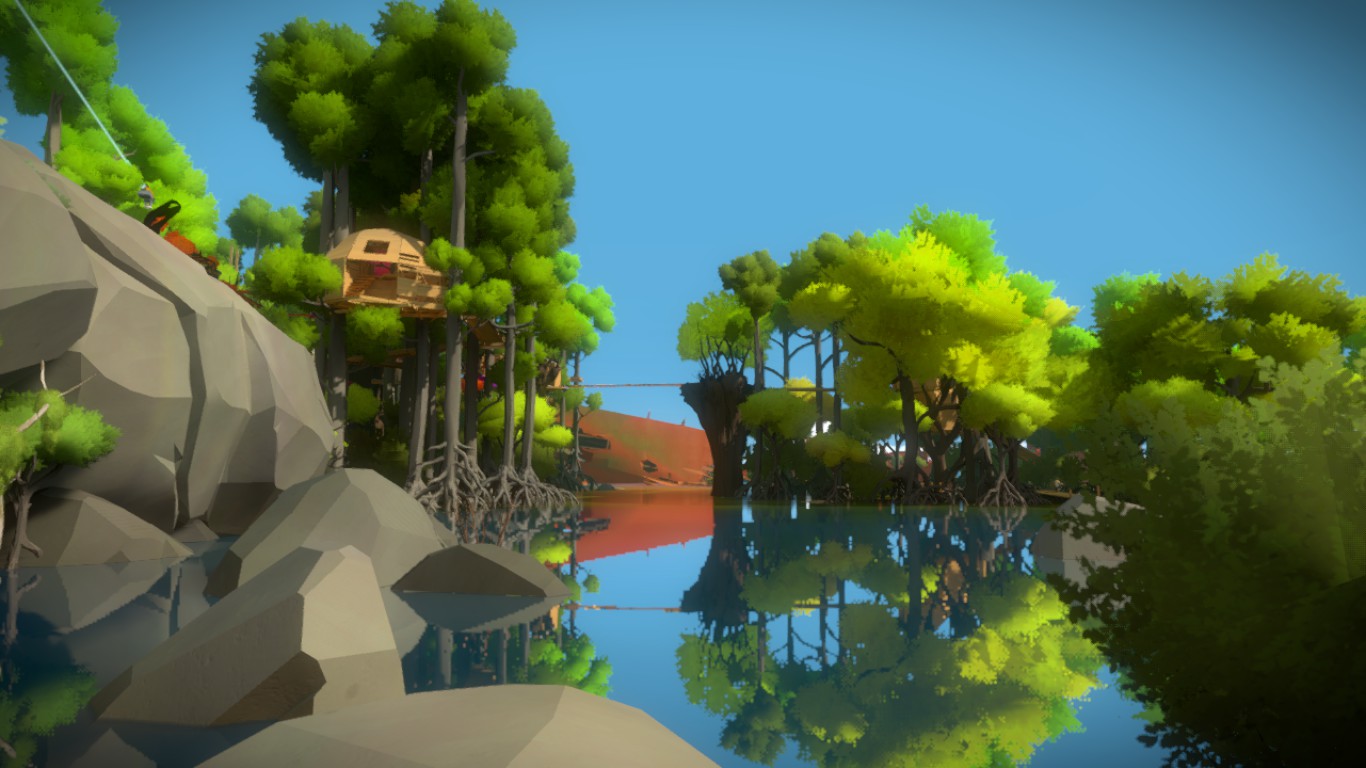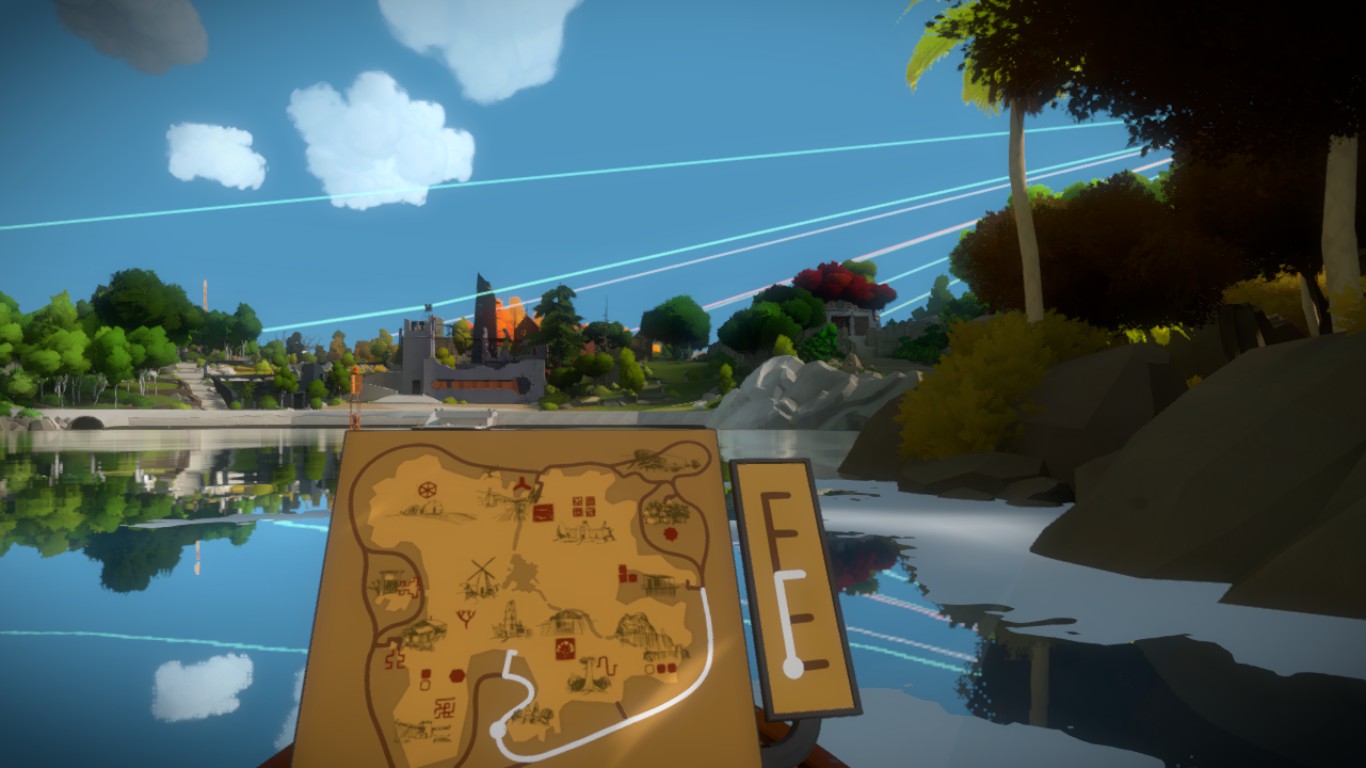Search
[{{{type}}}] {{{reason}}}
{{/data.error.root_cause}}{{{_source.title}}} {{#_source.showPrice}} {{{_source.displayPrice}}} {{/_source.showPrice}}
{{#_source.showLink}} {{/_source.showLink}} {{#_source.showDate}}{{{_source.displayDate}}}
{{/_source.showDate}}{{{_source.description}}}
{{#_source.additionalInfo}}{{#_source.additionalFields}} {{#title}} {{{label}}}: {{{title}}} {{/title}} {{/_source.additionalFields}}
{{/_source.additionalInfo}}- Details
- Category: Computer
- By J. Todd Cumming
- Hits: 2678
The Witness (PC)

The Witness
Developed by: Thekla, Inc.
Published by: Thekla, Inc.
Released: January 26, 2016
Available on: PS4, Windows
Genre: First person puzzle
ESRB rating: E for Everyone (alcohol references)
Number of players: 1
Price: $39.99
(Humble Store Link)
In 2009, an unknown game designer named Jonathan Blow created a platformer called “Braid.” The game provided a unique art approach and an innovative mechanic that impressed many players and reviewers alike, and helped to cement the concept that some video games could indeed be called “art.” In 2016, after years of hints and press releases, Jonathan Blow released his second game, “The Witness.” The game was entirely different, taking a first-person approach to the puzzle genre. But is it art?
In “The Witness,” the player takes the role of a silent, unnamed protagonist who appears in a dark vault. A panel on the wall can be easily manipulated to provide an exit to the next area, and soon the player will emerge from the vault to find themselves on an apparently deserted island. They are greeted by more panels, which take on more of a labyrinthine puzzle approach. Indeed, this makes up the bulk of the game – find panels, figure out the rules that each panel requires, then solve the displayed maze by tracing a continual line from the starting point to the proper ending. The more panels that are solved, the more areas on the island will be unlocked. The player is encouraged to explore the island to try and solve the puzzles, and hopefully figure out what they are doing on the island in the first place.
Exploration of the island is a thrill in itself. There are a variety of regions to explore, from abandoned quarries to lush jungles, and they all look wonderful. Aside from the sound of the water and the occasional breeze, there are very few noises to be heard in the game (and those that can be heard are typically clues to solving puzzles, or machinery that has been activated by solving puzzles). There is no background music to be heard at all. Your only companions in this lonely journey are the myriad of statues that can be found scattered about the landscape. There are plenty of things to be seen, though, and by carefully lining up their perspective, the player can discover a variety of fun scenes, such as a juggler with balls in midair, or a child reaching for her mother. In addition, there are no threats to the player while they explore – no monsters to fight, no traps to avoid, nothing that can cause damage or injury. Your character can’t even fall off ledges to get to lower areas. As a result, there is almost a zen-like approach to exploration. You can wander freely for as long as you’d like without having to worry about anything trying to kill you, including your own stupidity. This can be quite a refreshing change from many video games on the market, which use death as a punitive approach to incorrect actions.

Strong Points: Beautiful world to explore; many puzzles to figure out; intriguing world
Weak Points: No background music; weak story; demanding graphics
Moral Warnings: Minor language
While the exploration provides an aesthetic experience, the puzzles provide an intellectual one. Some of the puzzles will seem impossible to solve until the player runs across an area that provides a bit of a tutorial as to what all the odd symbols mean. Part of the fun is learning about the rules and how they can interact – there are plenty of “aha!” moments to be had when a player can find a solution. Or solutions, as the case may be – a few puzzles have more than one solution, which can unlock other areas or provide shortcuts for getting around.
Despite the fun of the puzzles and the exploration aspects, there are a few parts of the game that are flawed. One is in the story of the game itself. There are many abandoned dictation devices lying around the island, but most of these contain recordings of people reading various bits of literature – including at least one Biblical passage. There also is an abandoned theater hidden underground (finding the way to play the videos is another puzzle in itself) which plays short films about philosophy or odd, artsy flicks. But these almost seemed tacked on to the game, rather than a central part of the narrative. As a result, it feels almost as if there’s an attempt to give the game more meaning, but it’s a half-hearted stretch that leaves something to be desired. The story itself is quite lacking, with an unsatisfying ending which leaves more questions without any answers or explanations forthcoming.

Higher is better
(10/10 is perfect)
Game Score - 90%
Gameplay - 18/20
Graphics - 10/10
Sound - 7/10
Stability - 5/5
Controls - 5/5
Morality Score - 96%
Violence - 10/10
Language - 8/10
Sexual Content - 10/10
Occult/Supernatural - 10/10
Cultural/Moral/Ethical - 10/10
Another flaw is in the demands the game takes on the computer. My laptop may be older, but it isn’t really a slouch when it comes to gaming – I can handle games such as Overwatch without any problems, for instance. But the Witness seems to tax my processor to the point where the audio files have a tendency to stammer and stutter, often repeating themselves with an odd, echo-y quality. This can be especially problematic in one area, where nearby audio clues are essential to solving the puzzles. Although the graphics in The Witness are very nice, they aren’t to the point where my computer should be working as hard as it does, even at the lowest settings. Those with much better gaming rigs may not experience these same issues, but it’s disappointing to those who may not have high-end machines. When I did compare my laptop to the recommended specs, I did find out that my processor is slower than recommended, which might be the culprit. Those with newer laptops may not experience the same issue. The game also can be slow to load, but at least I never experienced any crashes. The only other flaw I can think of would be that, even though you can spend many hours on the island, there is little reason to go back once everything has been explored and all the puzzles have been solved.
On the moral front, there is little to be concerned about. As mentioned above, there is no violence at all in the game. Some of the hidden audio logs may contain some minor language, but that’s it. The ESRB indicates there are alcohol references, but I don't recall any – perhaps those are in one of the audio files that I haven't found yet.
If it weren’t for its flaws, The Witness would be about as perfect of a game as one could find. It is definitely a game to pick up and explore. To get back to the question posed in the first paragraph about whether or not this game can be defined as “art,” my thought is that the game is good, but certainly doesn’t reach the high bar that Braid set. But for those who like quiet exploration in peace, and also like to challenge themselves intellectually, The Witness is a must-have experience.








